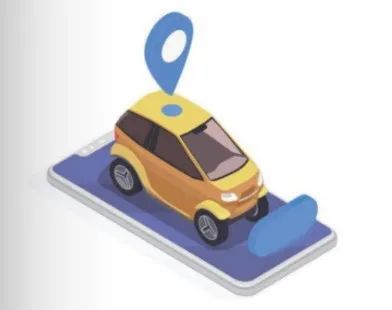Compared to traditional cars, the safety issues of smart cars have become a hot topic of social concern. Before purchasing and using smart cars, it is advisable to thoroughly understand the driving assistance systems.


What is the Driving Assistance System of Smart Cars?
The Advanced Driver Assistance System (ADAS) is also known as the automated driving assistance system. The “Levels of Driving Automation” (SAE J3016) standard established by the Society of Automotive Engineers (SAE International) classifies automated driving into levels L0-L5 based on the technical configuration and maturity of the automated driving technology, where levels L0-L2 are defined as driving assistance. Functionally, ADAS can be categorized into three types: active control, pre-warning, and other auxiliary functions (such as automatic parking). Consumers can focus on understanding the three major systems in the operation and use of smart cars.
1. Adaptive Cruise Control (ACC)
ACC is an intelligent automatic control system developed based on the existing cruise control technology. The principle of ACC is: first, set a following distance, and then use long-range millimeter-wave radar to monitor the cars ahead in real-time to control the engine and brakes, keeping the vehicle at a steady distance from the car in front. This allows the driver to free their feet.
2. Automatic Emergency Braking (AEB)
As consumers begin to focus on vehicle safety, car manufacturers have started to introduce various safety features, upgrading from the initial Anti-lock Braking System (ABS) to the Electronic Stability Control (ESC), and then to AEB and various other levels of equipment. The principle of AEB is: the emergency braking system uses radar to detect the distance to the vehicle ahead and makes an analysis. Based on different distances and speeds, it issues alerts. If the driver does not respond after the alert is displayed, and when the safe distance is less than the specified range, AEB will activate and automatically intervene in the vehicle’s braking system to reduce the probability of collision with the vehicle/person in front.

3. Adaptive Headlight System (AFS) and Active Dimming Headlight System (ADB)
The front headlights of the car have evolved from their initial lighting function towards intelligence and multifunctionality, currently including adaptive headlight systems and active dimming headlight systems. The AFS function addresses lighting issues on highways, rural roads, and turning roads, effectively increasing the range of illumination, ensuring safety visibility, and enhancing driving safety.
The ADB function primarily addresses the dazzling problem caused to oncoming vehicle drivers by high beams when following or meeting other vehicles. The smart headlight control system module needs to collect signals such as vehicle speed signals, radar distance signals, light sensor signals, etc., to calculate the status of surrounding vehicles, including the status of vehicle lights, driving speed, and direction. ADB outputs control signals to the actuators to adjust the light pattern, automatically turning off the light beams that shine on the vehicles ahead, thus resolving the dazzling issue.
How do these driving assistance features predict and avoid dangers while driving?
The original intention of smart cars is to use artificial intelligence to take over or intervene in driving operations, avoiding human operational errors, breaking through the limitations of human perception and reaction at high speeds, and significantly reducing traffic accidents. According to statistics from the Ministry of Public Security, 86% of road traffic accidents are caused by motor vehicle violations. Additionally, in the analysis of accident causes, 94% of traffic accidents are triggered by human factors, such as distracted driving, failure to follow road rules, misjudgment of road conditions, drunk driving, etc., which have become significant pain points of traditional travel methods. A classic study shows that if effective warnings and measures are taken 1.9 seconds in advance, the accident rate can decrease by 90%; if taken 2.7 seconds in advance, the fatality rate can decrease by 95%. Therefore, it can be concluded that as long as the technology of smart cars is mature enough, most traffic accidents can be predicted and avoided.
How do smart cars predict and avoid dangers? This is also an important issue that consumers need to understand when purchasing and using smart cars.
1. Intelligent Avoidance of Vehicles in Blind Spots
When driving at high speeds, if the driver intends to change lanes, the intelligent system will assess the risk of changing lanes based on signals from the rear millimeter-wave radar. If there are other vehicles behind and a collision risk exists, the rearview mirror will alert the driver with a yellow light. If the driver still attempts to change lanes, the system will intervene to control the vehicle and assist the driver in returning to the original lane to avoid danger.
2. Intelligent Avoidance of Oncoming Vehicles
When driving on a road with oncoming traffic, if the driver is fatigued, there is a high risk of head-on collisions. The intelligent avoidance function for oncoming vehicles will monitor lane markings and oncoming vehicles using cameras and determine whether the vehicle is deviating from its lane based on the position of the lane markings. Once the vehicle deviates from the lane, the smart car will use millimeter-wave radar and cameras to monitor the position of obstacles, assess the collision risk, and calculate the collision time, assisting the driver in controlling the steering wheel to avoid collisions.
3. Emergency Avoidance
Many drivers have experienced the extremely dangerous driving condition of a “ghost head”. When the speed is high, even if the AEB function intervenes, it is difficult for the vehicle to stop in a short distance. The emergency avoidance assistance function will intervene to control the vehicle based on perception information provided by sensors, utilizing the accessible space around the vehicle, and after calculating a safe path, will control the steering wheel to achieve safe avoidance. The requirements for smart driving technology in emergency avoidance assistance have reached a new height.
How do smart cars provide reliable safety guarantees in adverse weather, tunnels, and nighttime backlighting?
In adverse weather, tunnels, and nighttime backlighting, smart cars can still provide reliable safety guarantees. Heavy rain, complex traffic, and nighttime backlighting pose significant challenges to drivers, resulting in high accident rates. The root cause is visibility issues, which make it difficult for drivers to accurately assess their surroundings and execute the correct operations. Similarly, adverse weather can significantly affect the clarity of smart cameras, but smaller laser radars and millimeter-wave radars, less affected by weather and light, can provide drivers with a clearer “pair of eyes”.
1. Assistance in Heavy Rain Conditions
Heavy rain is the most typical and one of the extreme conditions that smart driving must address in road traffic environments. The most significant impact of heavy rain on smart driving systems is on perception sensors, primarily the cameras. When rainwater adheres to the car windows, the visibility of the in-car lenses becomes blurred, and the images may be distorted, making it much more challenging for the camera to collect image information than usual. Currently, some third-party companies are launching specialized products and technologies to help maintain camera clarity, such as mini windshield wipers and lens heating technologies.
So, is the battery of smart cars superior during flood disasters? We know that fuel vehicles have intake and exhaust systems; the engine needs to draw in fresh air, and the exhaust from combustion needs to be expelled through the exhaust pipe. Water entering the engine can increase exhaust resistance and even cause the engine to stall. If the engine is forcibly started at this time, it may get damaged or even scrapped. However, pure electric vehicles do not require intake and exhaust, as the power comes from the battery. Even if submerged in water, as long as the battery and motor are waterproofed well, they can basically maintain normal operation. Therefore, when the water depth exceeds two-thirds of the tires for fuel vehicles, drivers should not take risks. Even so, while electric vehicles may have a chance to traverse deeper water, water is a substance that can infiltrate everywhere. Physical principles tell us that electrical components are prone to short circuits when encountering water. Since the batteries and motors of smart electric vehicles are also electrical components, especially the power battery with numerous internal cells and complex circuits, storing a large amount of high voltage and situated in the chassis area, will water infiltrate and cause leakage or short circuits? To prevent water intrusion, key electrical components of electric vehicles, especially those prone to leakage, are required to meet the IPX7 waterproof rating, meaning that electrical components can be submerged 0.15m-1m, ensuring performance is not affected within 30 minutes.
2. Assistance in Weak Positioning Environments such as Tunnels, Bridges, and High Rises
Positioning technology, as one of the key technologies of smart cars, achieves precise positioning of the vehicle through various positioning means and multi-sensor data fusion, allowing smart cars to know their exact location and solve the problem of “where am I”. Positioning methods can be divided into three categories based on their technical principles. The first category is satellite signal-based positioning, represented by GNSS positioning, i.e., Global Navigation Satellite System positioning. The second category is dead reckoning, which infers the current position based on the vehicle’s previous position. The third category is environmental feature positioning, which uses laser radar (cameras, etc.) functions to match observed features with those in the database to determine the current position of the smart car.
Currently, the commonly used positioning method is GNSS (differential) + high-precision map + laser radar (cameras, etc.) information fusion positioning. Tunnels, streets blocked by high buildings, elevated roads, and tree-lined paths all belong to weak positioning environments. In weak positioning environments, GNSS signals are generally lost or ineffective, relying solely on feature positioning based on laser radar (cameras). Feature positioning, as the name suggests, requires reference features. With feature positioning, smart cars can operate very stably on sections of the road where lane markings are clear or features are prominent.
3. Driving Assistance in Complex Traffic Environments
Currently, the challenge for ADAS is the accuracy of external information collection and data processing capabilities. The solution to the former is the combination of high-resolution cameras and laser radars, while the latter’s solution is to use specialized automotive-grade processing chips, such as MCU, GPU, or GPU + FPGA. Of course, the development of high-precision maps is also advancing in tandem. In recent years, the ADAS market has grown rapidly, originally limited to high-end markets but now entering mid-range markets. Meanwhile, many low-tech applications are becoming more common in the entry-level passenger vehicle sector, and improved new sensor technologies are creating new opportunities and strategies for system deployment. From a technological development perspective, advanced driver assistance systems are expected to maintain a continuous development trend for a long time to come. At the same time, advanced driver assistance systems are transitioning from independent development of individual technologies to the development of integrated active safety systems, where multiple technologies can share sensors, control systems, and other platforms. Once a vehicle is equipped with basic ESP, ACC, etc., it can easily add other safe driving assistance technologies at a lower cost, further promoting the application of advanced driver assistance system technologies in vehicles.
Compared to detecting road environments and static objects, the greatest challenge for smart driving in complex traffic environments is the detection of dynamic objects, as it is not only necessary to detect the object itself but also to track its trajectory and predict its next trajectory (position) based on the tracking results. This is essential in complex driving environments. For example, at an intersection where pedestrians, non-motor vehicles, and motor vehicles mix without traffic lights, a human driver would assess their positions based on the walking speed of pedestrians and the speed of vehicles, control their speed, and estimate a safe distance. Therefore, smart cars must also achieve this, and it is not just about detecting and tracking one object but many objects. Thus, while enjoying the convenience brought by technology, we should remain cautious about smart cars. When purchasing and driving smart cars, we should first understand smart cars and study the vehicle’s user manual in detail to clarify the operating conditions of the smart driving system; secondly, under the guidance of professionals, familiarize ourselves with the startup steps, exit mechanisms, and takeover prompts; finally, during the driving process, maintain focus and be ready to take over at any time, avoiding complacency.

More Exciting Content

Scan to Follow
